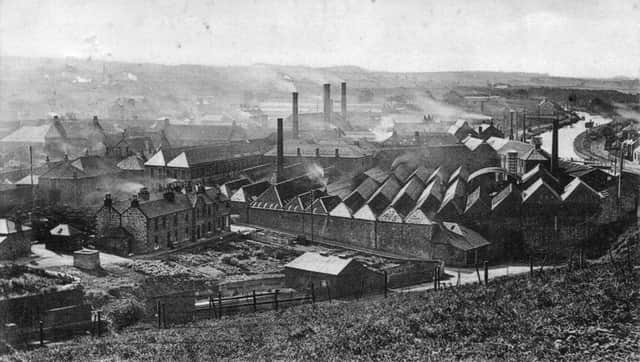Ian Scott: Glory days of the iron men of Bonnybridge


James Smith and Stephen Wellstood were childhood friends in Edinburgh and both found themselves in the United States before they were 20 seeking a new life in the land of opportunity. Although they worked in different parts of the country they kept in contact and independently found themselves in the iron industry. Smith served his time in Mississippi and settled there but when his wife’s health suffered in the southern climate he returned to Scotland in 1854. He was familiar with the new fangled American heating stoves which were lighter and more efficient than those used in the UK. Equipped with an idea and a bundle of purloined stove patterns he arrived back in Scotland and established a stove assembly plant in Glasgow using parts cast in various foundries using the US patterns. Some were made by Falkirk Iron Company but Smith was most impressed by Camelon’s Union Foundry at Lock 16 and especially by George Ure, the managing partner and a real iron expert who had served his time at Carron.
By this time Stephen Wellstood had returned to Scotland from New Jersey and the new partnership was born. They managed to persuade George Ure to join them which he did in 1860. A new firm called Ure and Partners was created and the Columbian Stove Works Foundry opened its doors on the site of an old chemical works on the banks of the canal at Bonnybridge. Stove manufacture flourished and the Smith and Wellstood name and fame spread throughout Britain and the Empire. One of the earliest and most lucrative contracts came from the Singer Sewing Machine Company. For nearly 20 years most of the familiar shiny black bodies of the machines were made in Bonnybridge and this was so successful that a new foundry was built for the Singer’s work in 1872. With the ending of the contract in 1890 the two foundries were reunited under the Smith and Wellstood name. A huge variety of stoves were made – the Enchantress, the Empress and the magnificently decorated International among them – stoves for homes, halls, churches and ships and despite the death of both founders in 1886 the company went from strength to strength. The firm dominated the life of the village throughout the 20th century owning 500 houses and supporting many social and cultural activities and, despite amalgamations and decline elsewhere, the works were completely redeveloped in 1950. But the truth was that the industry was dying and the 1970s and 1980s brought takeovers and eventual closure. By the mid 1990s the site was cleared and today little remains of the old foundry buildings.
Advertisement
Hide AdAdvertisement
Hide AdThe wonderful 1970s mural showing the inside of the works was lost some years ago during housing development but thanks to the efforts of the Greenhill Historical Society a fine photographic reproduction now graces the external wall of the library. It is a tribute to the energy and enthusiasm of the local community as well as a fine memorial to the men and women who made up the workforce of Smith and Wellstood.